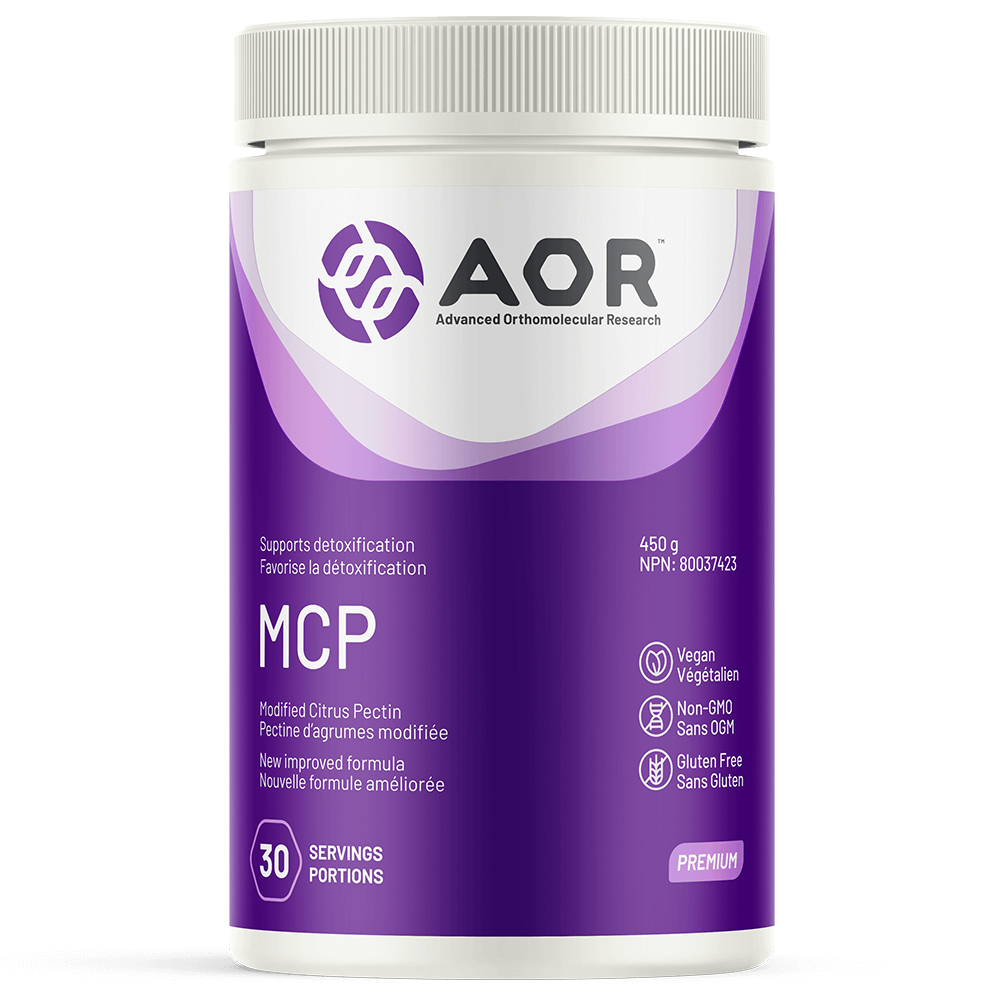
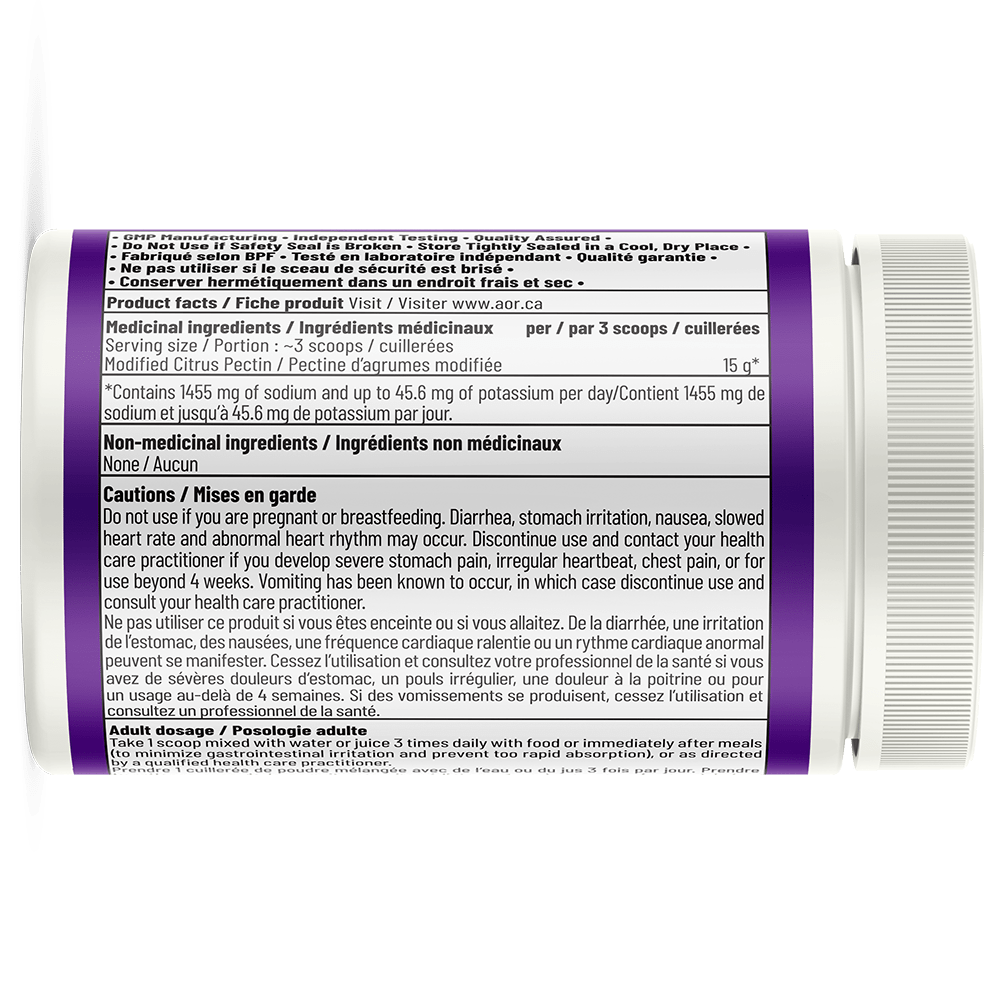
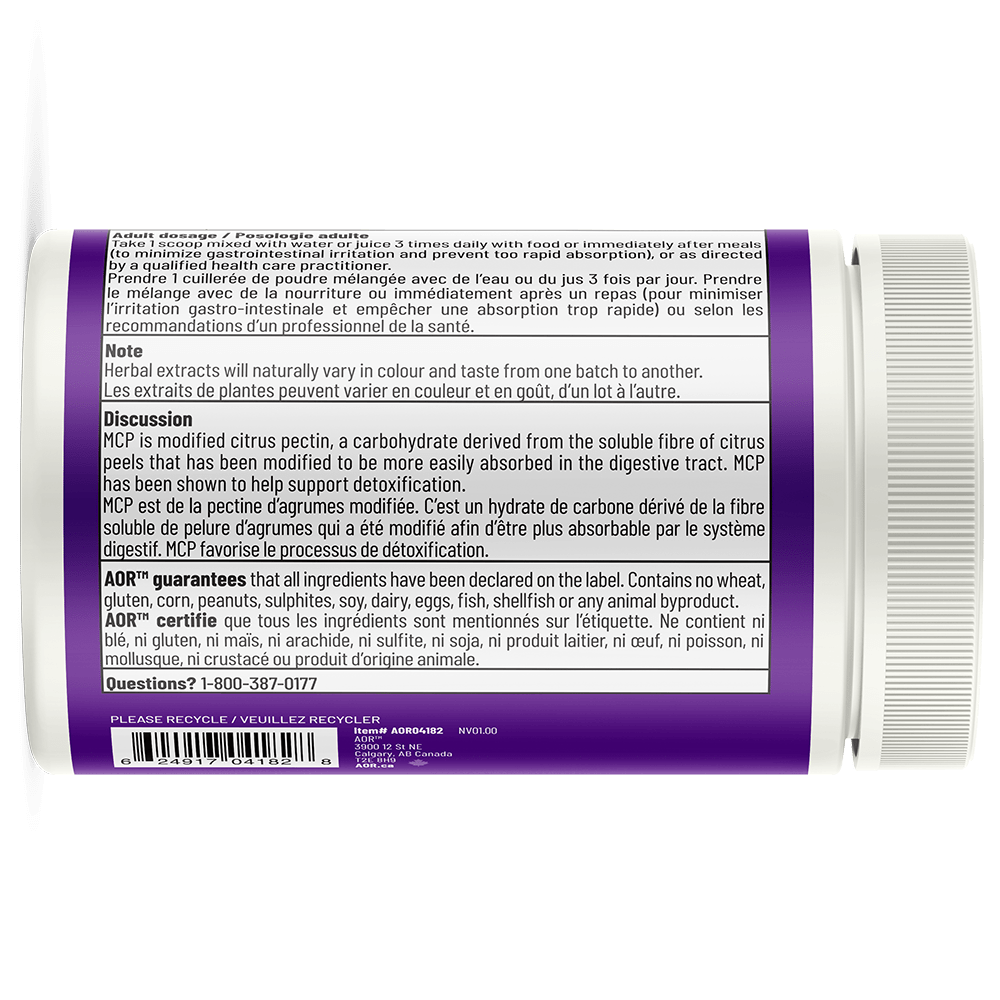
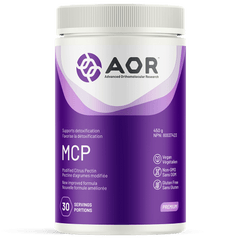
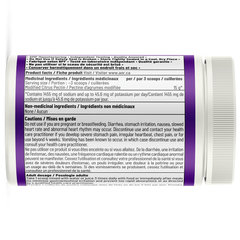
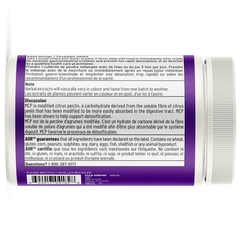
MCP
- 174.99$
0.00$- 174.99$
- Unit price
- per
Description
x- Modified citrus pectin
- Contains a soluble source of modified citrus pectin
- Promotes detoxification
- Isolated from orange and free from coloring and masking agents
Modified citrus pectin (MAP) is a carbohydrate derived from the soluble fiber in citrus peels that has been broken down into smaller fragments for easier absorption in the digestive tract. AOR's MAP is refined to match the specific size and weight of the pectin used in the studies.
The white skin just below the rind of citrus fruits like grapefruit and oranges is packed with beneficial pectin. Unfortunately, its bitter taste and chalky texture make it an undesirable food. This is where PAM comes in handy. PAM has been shown to combat heavy metal toxicity and promote healthy cell growth.
Citrus pectin is very rich in galactose. This pectin exists in long, complex chains with galactose residues hidden deep within their complex molecular branches. To solve this problem, carbohydrate chains can be broken into shorter fragments under controlled pH conditions, exposing more galactose residues and simplifying the complex molecular branches. Extensive processing of lemon, grapefruit, or mandarin fibers produces pH-modified citrus pectin. This modification process maximizes the interaction potential between the pectin's galactose residues and galectin-3, thus unlocking the potential of citrus pectin.
AOR's PAM is prepared from Florida and French oranges, not grapefruit, as grapefruit is known to interfere with certain medications. AOR's PAM also does not contain masking agents such as colorings or flavorings to maintain a pure product for vulnerable populations using this product. This means that the product's physical properties, such as color, taste, and solubility, may change depending on environmental factors such as harvest time, country of origin, soil conditions, etc.
Produits recommandés
Produits récemment consultés
- Choosing a selection results in a full page refresh.




